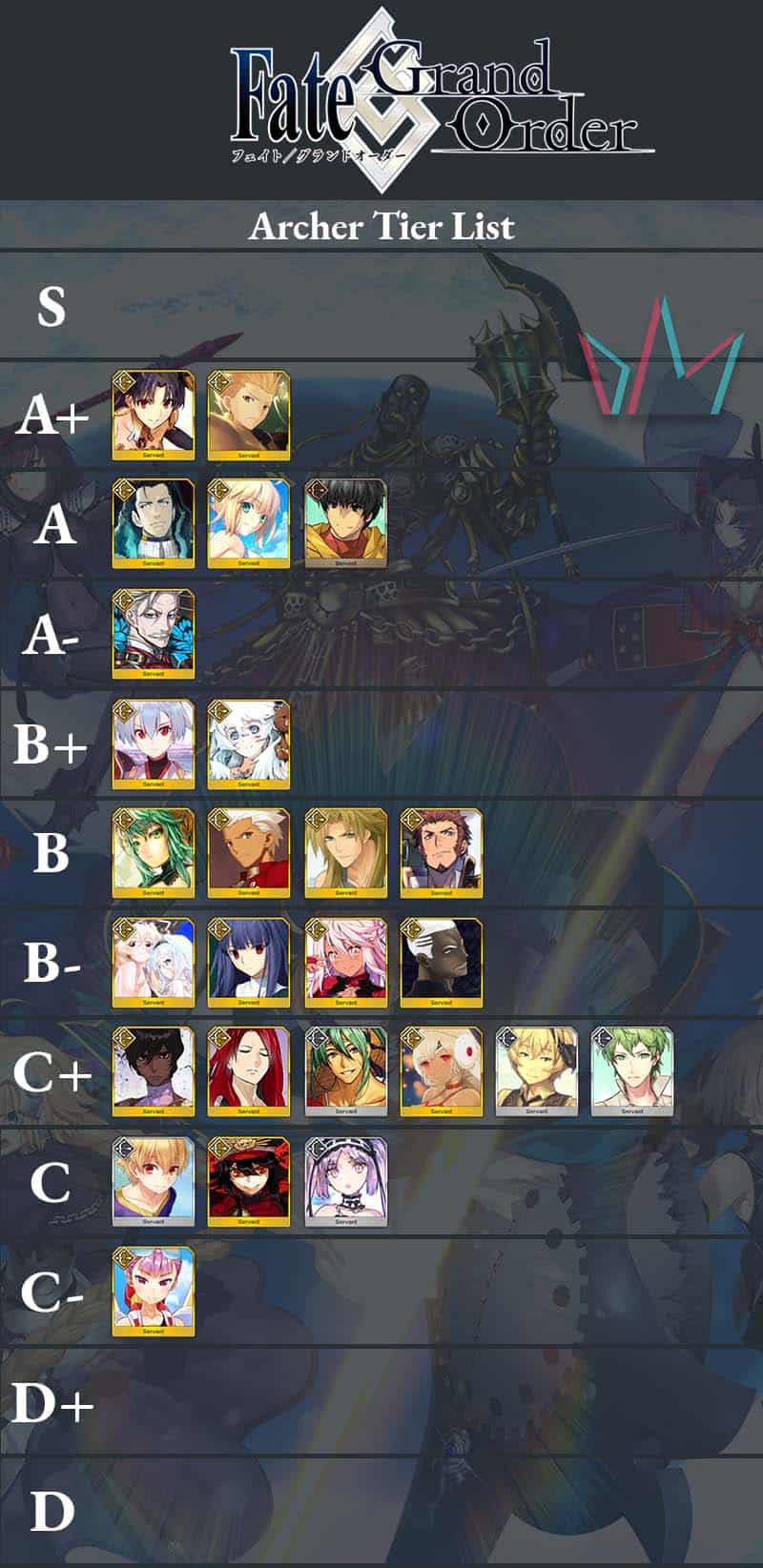
Players often wonder which characters are stronger in gacha games. Particularly when it comes to high rarity rolls that can be extremely hard to chase. Grand Order has a bit of an interesting relationship with this as we don’t have nearly the power creep problem other games tend to have. It does exist. It’s just not in the same magnitude. So where other games make tier listing a necessity so you don’t invest in a character that just can’t do content, here it helps you understand who’s weaker, though most characters are still viable. It’s a question of how hard you want to work or how efficient you want your clears to be, not whether you can at all.
The best Archers in Fate/Grand Order are Ishtar, Gilgamesh, Nikola Tesla, Artoria (Summer), Arash, and James Moriarty.
Archers are easily the strongest of the knight classes. Mediocre Archers would be on the upper end in a less-competitive class. They tend towards powerful AoE characters and in particular have an embarrassment of riches for farming options. The class base stats and passives as a whole lend themselves to critting, though, and make Archers surprisingly versatile because on a basic level a character that crits with no other benefits is usually doing better at any given metric than one who is not. The top-end of the Archer class tends to feature a stellar AoE NP paired with crits that can outpace a solid portion of the dedicated single-target field; they’re excellent.
Archer Tier List Methodology
A lot of tier lists cause arguments because their authors don’t make clear what does and doesn’t influence a placement decision. Here, we’ll cover the broad decision making principles for the list. This helps you to understand what was and wasn’t under consideration when placing characters and avoids troubled understanding when different people want lists that focus on power in a vacuum, others consider teams and whether there is a use for the character, etc. It’s not really feasible to make a list that ranks the way everyone would like, and many lists try to strike a balance between multiple concerns without explaining which things they weighted more heavily. Here is a list of key points for this list.
- Assumption of Good Play: Many lists dock characters points for being harder to use. Here, we’re going to assume you know what you’re doing when using a character. A player can learn to count cards or align/desynch their skills effectively, a character’s placement should be based on their usefulness not how well they do when used suboptimally.
- No Points for Splashability: It’s a common question whether a character should be considered better because they fit into a greater number of teams. This doesn’t really help understand a character’s quality on its own, and while self-sufficiency is valuable, the ability to fit into numerous mediocre teams isn’t really all that relevant. Characters will still be ranked accordingly if they virtually require a particular expensive setup but as almost every character in the game can be used in a viable composition with a bronze character and a friend support selection, this usually isn’t the case.
- Usefulness over Raw Strength: Some characters are very good at things you just won’t really ever need. Tanks are a good example in GO. Several characters try, and theoretically succeed, at being strong tanks but the game doesn’t really support tanking as an archetype because most threatening encounters feature AoE damage. Because of this, it makes more sense to grade characters on how useful they are rather than how strong they are in a vacuum.
- Niche Evaluation: Some tier lists like to severely over or under evaluate niche characters by either only considering them with the niche on with the assumption you’ll never use them otherwise or merely evaluating the niche ability as if it were not on a niche, and then deducting a bit to make up for it. Here, we’ll spend time evaluating how useful a niche is rather than applying a blanket solution. Not every specialist is created equal.
- Farming vs. Challenge Quests: It’s impossible to avoid that far more time is spent farming in GO, but CQs are still important. Generally, most CQs favor Crit/Single-target characters, while farming is an NP game, but the opposite has been true in the past. Many tier lists cap characters at a certain tier if they cannot do both effectively and this inflates the position of mediocre characters who do two things okay over those who do one thing well. A character will only receive better placement here if they’re exceptional in both categories.
- Granularity: GO just isn’t the sort of game where large portions of the characters are unusable. Many GO tier lists try to tier like other games creating gridlock at the top because by the standards of other games where any character who can participate in hard content is a high B or low A, almost every character in GO qualifies. Here, a C is still a viable character, just one who doesn’t bring much to the table you can’t get better elsewhere.
- NP5 for Welfares and Friend Point Characters: While it’s sensible to rate gacha characters as if their NP level is low, free characters are rapidly going to stack up for consistent players and most will have access to them at NP5. Three-star characters who are not part of the friend point gacha will be considered without NP5 like any other gacha character.
Archer S-Tier
No Archer manages to make it to this level, which can best be defined as ‘so good they can heavily change the viability of several other characters.’
Archer A-Tier

Ishtar – A+
This one, to many users, will seem strange. Ishtar has a reputation as a swingy, unreliable, RNG-based character. I say to this; consider a world where you fail to roll any of Ishtar’s chance-based buffs, and completely botch using gems and evaluate her that way. The fact of the matter is that the math shows Ishtar is one of the better characters in the game when you pretend she never gets the benefit of any of the ‘unreliable’ features that people complain about.
Gems can be played around by card counting (Or just works naturally while farming), she’s an exceptional farmer thanks to her 50% NP battery, and her base-level brave chains with a nearly on-demand NP and 20%/20%/20% buff lineups are blisteringly powerful. Ishtar is crazy and even if you pretend her third skill doesn’t exist she would be an A.

Gilgamesh – A+
Gilgamesh’s base-level performance looks a lot like Ishtar’s performance when you follow the ‘pretend the chance-based buffs don’t even exist’ advice, but instead of chance-based buffs, Gil is massively more powerful when facing most enemy servants. That can sometimes be pretty low-impact while farming and he has a 30% NP battery as opposed to the more desirable (and abundantly present among Archers) 50%, but it’s a massive boon to his Challenge Quest viability, where almost all meaningful targets will be servants.
I rate Gil and Ishtar nearly the same, with Ishtar being better at fighting non-servant targets and pushing large crits onto one or two priority targets while Gil shines when he gets to target three servants of roughly equal priority. Ultimately they’re both usually so good even outside ideal circumstances that the difference is academic.
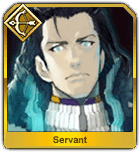
Nikola Tesla – A
Tesla is basically Gil, but with slightly worse base attack and a 50% NP battery instead of 30%. If you’re farming most nodes, Tesla is going to be Gil+, if you’re fighting hard wave-survival boss fights, he’s Gil-. Almost buff for buff they end up with the same buffs on with the same sizes and if Tesla had the same base attack as Gilgamesh, they’d be separated almost entirely by one having a better NP battery and the other having a wider niche. I’ve rated him slightly lower than Gilgamesh here because Tesla is better than Gil in a category where they’re both great, where Gil is nicer in a category where small increases in power are much more meaningful.
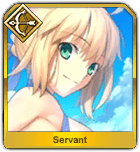
Artoria (Summer) – A
Summer Artoria is in third place for Single-Target NP damage in the class behind a character who relies on short-term buffs and one who uses a buster NP and a battery. In exchange, she has nothing but three turn buffs and an NP that recharges itself by a whopping 45% with only her own buffs. With CEs and her usual supports, Excalibur Vivien usually gives back 70+% charge on its own before you factor in other cards. A single final position arts crit then produces 35% with Artoria’s buffs alone making her NP feel more like just one more normal card except you always draw it.
Did I mention she has sustain, stalls enemy NPs and crits well, too? Squirtoria is insane and there are no two ways about it.

Arash – A
Arash is nothing but a walking NP, but he comes with the unique bonus of removing himself from the party once he’s done. In exchange, he does very comparable damage to gold options and has a very reasonable 30% mana battery. He only has one star and one trick, but he’s one of the single best farming tools in the game, full stop.
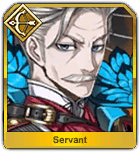
James Moriarty – A-
Moriarty is great, but he falls just shy of Summer Artoria’s spotlight. A triple arts deck and huge NP battery help him really lay the pain on bosses but it’s still usually not nearly as spammable as Excalibur Vivien. Thankfully he does just a touch more damage to start out and can stack up a defense debuff to open the gap a little more to make up for forcing you to work a little harder to squeeze out multiple NP punches.
He, unfortunately, eats some crit stars to use his battery, which is less than ideal, but he has an upcoming buff that removes the actual loss of the crit stars and functionally turns his charisma into an unconditional 40% for anyone other than himself. He’s still likely a bit behind Artoria then as he can’t sustain as well, and single-target characters inherently care more about survivability because they tend to be used for Challenge Quests, but it’ll be even closer.
Check out these other classes and their Tier List!
- Lancer Tier List
- Saber Tier List
- Extra Class Tier List
- Berserker Tier List
- Assassin Tier List
- Caster Tier List
- Rider Tier List
Archer B-Tier
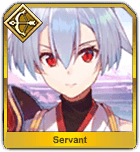
Tomoe Gozen – B+
Tomoe is one of those characters that does pretty much nothing glamorous whatsoever and is content to just be generically, very good. She is, in fact, generically very good, and in perhaps the cruelest irony in all of GO, she’s probably too good at just doing her job for the silly cool thing she enables to ever work. Tomoe is a central part of what could theoretically be a viable DoT burn comp but all the members of it do too much damage and kill things before the burn has time to matter. Otherwise, she crits things, and she NPs things, very well, but not too exciting.
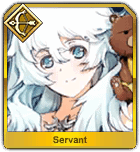
Orion – B+
Orion gets to sail into a high ranking despite doing absolutely nothing and leaving Artemis to do all the work. Artemis, for her part, is basically just a worse Squirtoria with a male niche. All the damage you expect from Artoria, none of the insane NP refire rate. She’s also a bit more proactive in her sustain with defense up on herself paired with enemy attack down as opposed to Squirtoria’s more reactive heals. Which of those two things you like better probably boils down to how you feel about incoming damage more than one being strictly correct.
Artemis certainly ends up with more effective health if damage lines up with her defense turns, but Artoria can just heal when she needs it. She does absolutely lay the smackdown on Males, though, with an unfortunately single-turn buff. She can still be fairly great, but she pales in comparison to the top end of Arts Archers. P.S. because of hitcounts and a lack of card performance buffs, the quick cards in Artemis’ deck are actually better for NP generation than the arts ones. She’s a strange character.
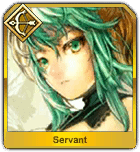
Atalanta – B
Atalanta lives in the Archer edition of the ‘Skadi’ slot, as she’s perhaps a high C without her and an unstoppable wrecking ball with her. Atalanta loops extremely well and piles crit stars so high the counter maxes out, making it much simpler to burst down pesky farm bosses. Unfortunately, when not used in Skadi system comps, she starts to look pretty poor with low damage even with her burst buff on and trouble actually getting the ball rolling on her NP without Skadi around. YMMV here and you should value Atalanta very differently depending on your circumstances.
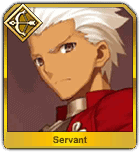
EMIYA – B
Hard to argue with 100% crit damage for 3 turns. A mana burst style skill that applies to all three card types simultaneously is excellent and makes a brave chain from him really lay in for damage and utility all at once. UBW could stand to be a bit more damaging but it isn’t terrible and produces hilarious numbers of crit stars when paired with Hawkeye (1 guaranteed per hit on a 10 hit AoE, or a minimum of 30). All said, Emiya’s not the best character in the game, but he is certainly quite good when he’s doing 4x damage on crits to the average character’s 2x and pouring out the stars to do it basically by himself.
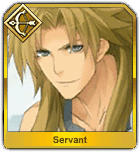
Chiron – B
One of the better budget supports available. He’s cut from the same pattern as Helena, but with her secondary NP support focus traded for critical hit power. Him being an archer can sometimes mess with the crit plan, but he makes up for this decently well by having a solid ST NP to provide a little bit of help on particularly priority targets. Better yet, all of its damage potential is coming from the buffs he hands out to the party, so he’s not even giving up a skill slot for that ability. He also has much more reasonable cooldowns than Helena’s which is a huge upside for longer challenge content.
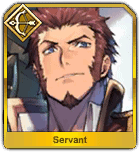
Napoleon – B
Napoleon is one of those characters who would probably look crazy in another class but just doesn’t stack up well compared to his competition in Archer. With a 30% NP battery, an Innocent monster effect, and two separate single turn buffs, he should be an excellent farming option, but he just doesn’t line up compared to Gil and Tesla who are both very similar to him. He has larger upside in some damage categories, and smaller in others which can make him subtly play different with a cadence that’s a bit unlike the others.
When it comes down to it, he stretches himself in a few too many directions to outpace the strong offerings from other Archers. Strong in a general sense, and perfectly capable as a farmer, just competing with multiple excellent options. He is, however, one of very few characters who ignore defense and pierces invulnerability simultaneously, which makes him very useful at dealing with very tanky annoying nodes.
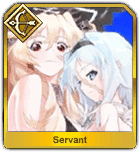
Anne & Mary (Summer) – B-
Pretty much all they do is damage, but a 3 turn 45% attack up is a decent base to build off and their NP scaling with missing health helps really push out the damage particularly when paired with guts, which they also have. Due to their limited internal kit, your mileage may vary quite a lot with the team composition you put around them, but with Hans as one of their better support options, it won’t be all that likely you can’t find something good among what you already own.
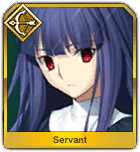
Asagami Fujino – B-
Good damage? Check. Reasonable access to that damage? Check. Works for multiple turns and so doesn’t fold to break gauges? Check. Fujino’s just solid and while here final skill is a bit strange, giving up 2000 max health to remove 2000 damage from every attack is a solid proposition as long as she gets hit at least twice in those three turns. Unfortunately, she was only available once, ever, so almost no one has her. Don’t worry though, if you missed her you’re just missing as described above, a reasonable damage character with very little in the way of frills. She’s somewhat comparable to a slightly worse-on-average Tomoe who is better at dealing with enemy defenses. Very reasonable.
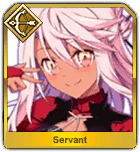
Chloe – B-
Chloe is essentially EMIYA Alter just below her but with an even more burst-canted NP but a better fall back plan in the form of +100% Star generation and critical damage boosts. I’m not nearly the sort of fan of Chloe that many people are as she often gets lauded for her NP damage, but it’s pretty unimpressive outside of the Projection turn. She falls victim to being evaluated at her ceiling because people like to give Welfares lots of credit after farming hard for them, but her average performance is a lot more…average.
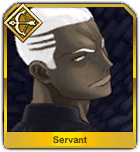
EMIYA (Alter) – B-
He technically hits the hardest out of all the single target NP archers, but his buffs are short. He’s locked to single turns or the hit-based type for the most part which can make him very clunky in practice when trying to squeeze out multiple turns against a break gauge. It can be done thanks to the hit-based buff but it requires avoiding his cards which can bite you just as hard as him being burst-oriented when you use them.
Overall, I think his ability to NP multiple times and the hit-based buffs can often make it fairly feasible to break two bars using him, which covers a decent number of bosses, though usually not the meanest ones. His rating reflects how strong he is at doing this.
Archer C-Tier
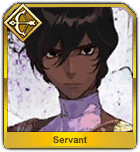
Arjuna – C+
Arjuna’s primary cooldown is one of the longest in the game and it doesn’t make him particularly better than other Archer options despite that hefty cost. He’s still quite solid thanks to excellent star production to use alongside the archer passives, but ultimately he can feel a bit like an anti-boss character who got lost thinking he was meant to farm and ended up being a pile of utility that has one turn of reasonable damage followed by a long wait putting out fairly mediocre numbers. He is virtually immune to debuffs, though with a 5 turn debuff immunity skill on a 6 turn cooldown, which can be quite useful when enemies try to cripple the team.
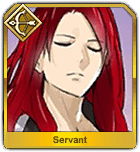
Tristan – C+
He’s fairly similar to an SR version of David, featuring his fairly supportive tendencies, signature skill, and better-than-you-think single-target NP. Ultimately I wouldn’t be excited about pulling Tristan, but I wouldn’t be upset, either. Much like Martha and Ivan, clearing any sort of debuffs on your team and enemy buffs simultaneously is just good. He’s limited to mental debuffs but he still tends to blow out situations where he’s good. Skill two is a shame though; most 6 turn Cooldown NP batteries have an upside, his has a downside.
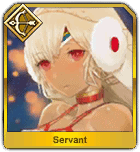
Altera (Santa) – C+
Santaltera isn’t exceptional, but she’s got solid chops as a budget option if you lack the premier farm supports. She provides a bit of NP charge and some damage in a pinch, but her final skill feels like it could do all the things it does, not have the downside attached, and still be fine which is never a good feeling. Overall, she’s in a bit of a weird spot because she is quite a reasonable pick for all the things she does, it’s just very unlikely you don’t have someone who does that thing just as well as her and some other things to boot.
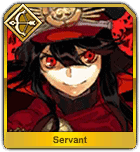
Nobunaga Oda – C
She’s got solid crits, but is otherwise locked to a one-turn niche buff and a separate niche on her NP. I wouldn’t snub my nose at Nobu, since Demon King smacks of Self-Modification, one of the better skills in the entire game, but she certainly can feel like she needs to be hitting one of her niches, or possibly even both to line up particularly well.
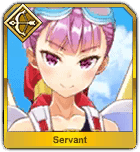
Helena Blavatsky (Summer) – C-
I hesitate to call Helena nonviable mostly because she has a 20% AoE NP battery. The rest of her kit is just not really enough to cut it. Her very small innocent monster doesn’t amount to much, NYARF is good only for its NP drain, and her mana burst skill is smaller than the standard 50% to make room for a one-time, not even one full turn, debuff immunity. I wouldn’t count Helena out, but I wouldn’t give her any credit either.
